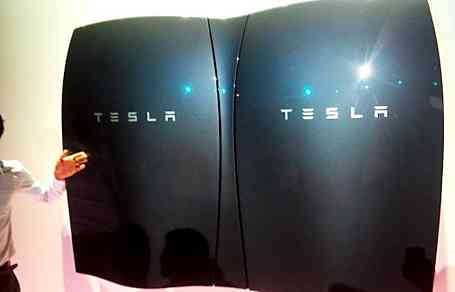
A couple of months ago, Tesla Motors announced an ambitious new technology—the Tesla Powerwall, which is a battery that can power up homes. The idea is that houses could harvest and store energy generated by solar panels during the day and use it to power up at night or during a power outage. The goal of the company is to fundamentally change the way the world uses energy.
The Basics of the Technology
The Powerwall is a home-based battery pack that is designed to store up to 10 kilowatt-hours (kWh) of power. So, if a hair dryer consumes about 1 kW to run while a stove takes more, the new technology could power a home for several hours. Simply put, it comes in 10 kWh weekly and 7 kWh daily cycle models, but can be installed in multiple units for houses with greater energy requirements.
The boxes, which are about 33 inches wide, 51 inches tall and 7 inches deep, are carefully designed to be easily installed and connected to the Internet so users can monitor their energy usage.
Aside from the Tesla Powerwall, the company is also planning to introduce a battery storage system for businesses called the Powerpack, though the price for this related technology has not been released yet.
Relevance to Tesla’s Proven Automotive Battery Technology
The Powerwall could be similar to the technology found in the company’s Model S car. It has been presumed that the vehicle uses a particular type of lithium-ion battery of which one layer—the cathode—is composed of a mixture of nickel, cobalt oxide and manganese. Lithium ions are interfused throughout this layer, and when the battery is charged, these ions are driven out of the cathode by an electrical current into a fluid filled with electrically conducting ions and into another layer—the anode—which is composed of stacks of graphite. When the battery’s stored power is used, it triggers the ions to drift back into the cathode.
Though Powerwall’s geometry or particular blend of ingredients might be different, its basic chemistry can be the same with that of the Model S car’s battery pack.
How the Technology Can Become a Game Changer for the Energy Industry
Based on product specifications, the Tesla Powerwall can store less power than the typical battery pack of the Model S car. Also, the vehicle is powered by direct current, while homes use alternate current. This means the new technology would include some type of converter.
But while the Powerwall may be quite similar to other battery pack technologies, it can spur change in the household power storage market. Of course, the idea of harvesting and storing energy from the sun is not new, but most people are using the typical, cheaper, small capacity batteries that cannot continuously power up an entire home.
Also, some companies experimenting with similar technology to power up facilities have only ended up creating huge, industrial-size batteries—essentially like an entire building. Moreover, most people are using photovoltaic systems to help power their homes but only to sell their excess energy back to the power grid during the day. In case of power outages, they use back-up generators that uses gas, which is quite costly.
With these things in mind, using the new Tesla Powerwall really makes sense, not just because of its design, but also from a purely economic standpoint. One can say that the Powerwall is making an assault on other batteries.
Leave a Reply
You must be logged in to post a comment.